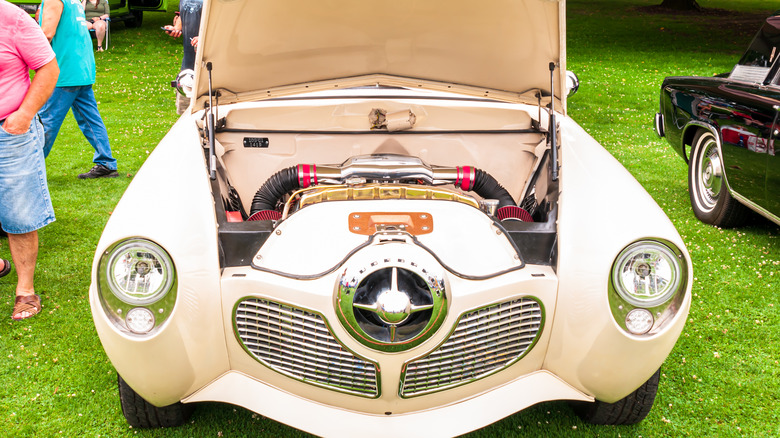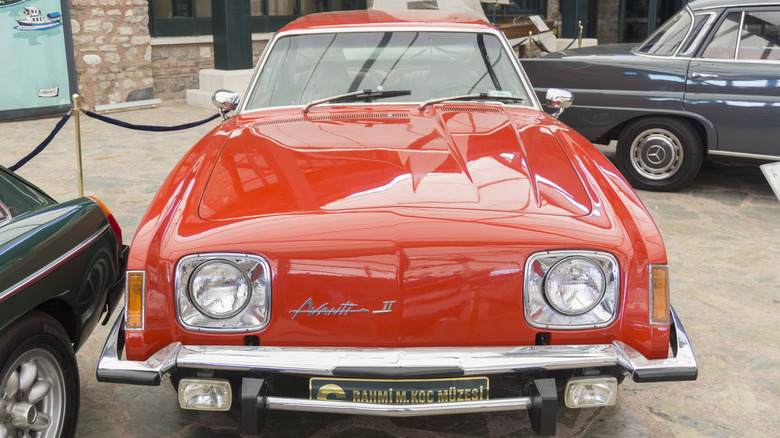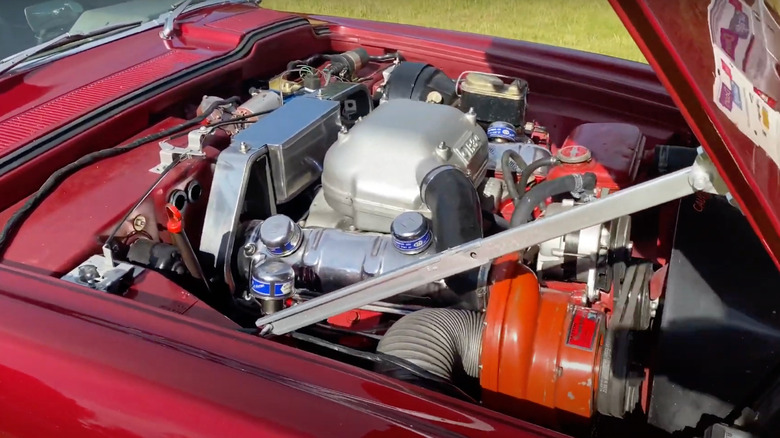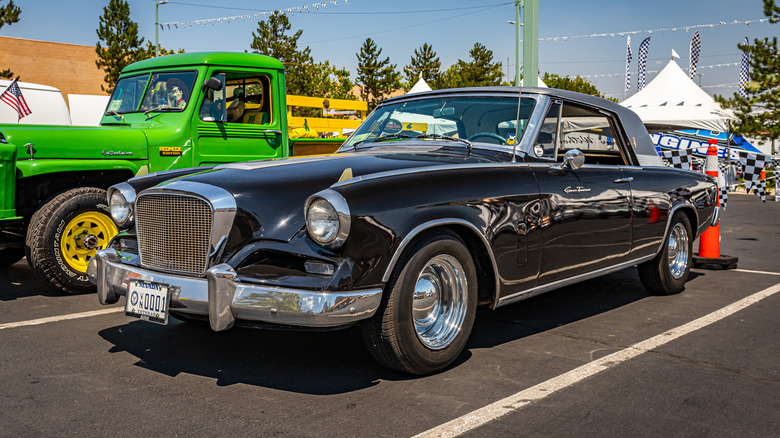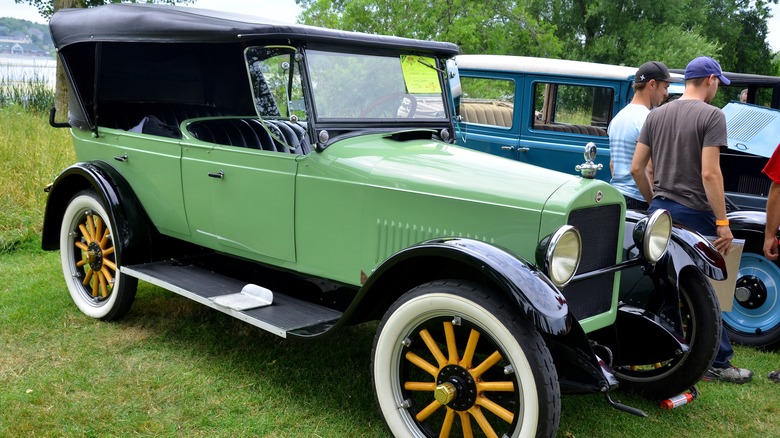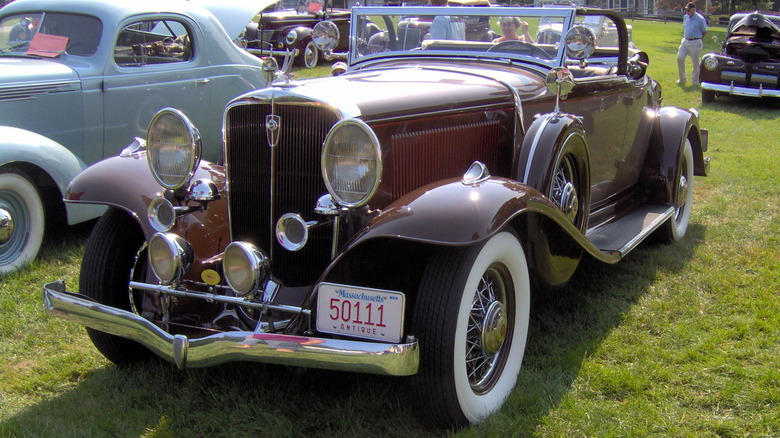4 Of The Most Powerful Engines Ever Built By Studebaker
Studebaker was founded in 1852, starting off as a builder of wagons and wheelbarrows for Americans moving West in search of gold. By 1919, Studebaker had gone all-in on the internal combustion engine, replacing its line of horse-drawn vehicles with a six-cylinder powered truck. Things were going well for Studebaker when the stock market crashed in 1929, but the Great Depression led to a 1933 bankruptcy and restructuring. Studebaker had recovered by the early 1940s, but shifted to production of military trucks and engines for the indomitable B-17 "Flying Fortress" bomber during World War II.
It was the first American automaker to come out with a new model after the war; the 1947 Starlight. Studebaker's first V8 engine came in 1951, and it celebrated its centennial the next year by providing the pace car for the Indianapolis 500. Studebaker unveiled the Avanti at the 1962 New York Auto Show, and the supercharged version of that car later set more than two dozen speed records, including the one for fastest production car in 1963. Studebaker only survived until 1966, but here are a few of the most powerful engines it produced over its 114 years.
Avanti II V8
The R2 version of the Avanti used a supercharger built by Paxton Automotive, which was a division of chainsaw manufacturer McCullough Motors. The $210 supercharger upgrade (about ten times that price today with inflation) boosted the 289 cubic inch V8's output to 290 horsepower and 303 pound-feet of torque. The car was built on the older Lark platform but featured a fiberglass body made by Molded Fiber Glass, which also made the body panels for early Corvettes. The lightweight body was only one of the Avanti's many innovations.
It was the first American-built car to come standard with disc brakes on the front wheels and used an optional limited-slip rear differential to help put the 289's horses on the road. Power steering and windows made the Avanti II a joy to drive as well, and it could hustle from 0-60 in just 7.6 seconds. Fewer than 2,000 were built for 1963 and 1964, and one of those broke the production car speed record in 1963 at just over 170 miles per hour.
Avanti R3
Studebaker also made a high-performance version of the Avanti dubbed the R3, which had a slightly larger and significantly more powerful V8 compared to the R2's. The R3 engine displaced 304.5 cubic inches and had forged pistons, new cylinder heads, and a compression ratio of 9.75:1. The official numbers on this engine were 335 horsepower and 400 pound-feet of torque, but some gearheads suspect the production R3 was detuned to well below the engine's capabilities.
A hot cam and upgraded bearings helped produce that power, and R3 engines also got forged aluminum pistons and a Prestolite electronic ignition system. Beefier suspension bushings were added to smooth the ride, and a Borg-Warner three-speed automatic transmission sent power to the Dana 44 axle in back. Studebaker made almost 5,000 Avantis between Summer of 1962 and the end of 1963, but only nine of those were R3s. They carry 1963 and 1964 model years and were capable of getting from 0-60 in 6.4 seconds.
Naturally aspirated 289 V8
Studebaker's 289 cubic inch V8 didn't need a supercharger or high-strength internals to crank out impressive power numbers. The naturally aspirated version of this engine was used in several models, including the 1955-only President Speedster coupe. The version of the 289 that powered the President Speedster produced a somewhat modest 185 horsepower, but the 289 in the 1957 Golden Hawk cranked out a far more impressive 275 horses at 3,800 rpm. The Golden Hawk had been introduced the previous year with a 352 cubic inch Packard V8 under its hood, but that engine produced the same 275 horsepower despite the extra displacement.
A high-compression version of the 289 made 225 horsepower in the 1962 Gran Turismo Hawk. The GT Hawk could fly from 0-60 in about 8.5 seconds, but drivers had trouble reining it in from faster speeds. Car Life magazine testers experienced brake fade so severe they couldn't bring the GT Hawk to a complete stop from 80 miles per hour.
Big Six
Not every potent Studebaker engine was a V8. Although its output pales in comparison to the engines that came along a few decades later, the L-head six-cylinder known as the "Big Six" was suitably impressive for its time. The Big Six displaced a whopping 354 cubic inches and powered a model of the same name between 1918 and 1926. This engine produced 75 horsepower, which was more than three times as powerful as the T-4 engine in that year's Ford Model T. The Big Six had ample storage capacity and a top speed of 80 miles per hour.
This made it very popular among alcohol smugglers during Prohibition, which ran from 1920 until 1933. The durability of the Big Six engine and chassis also made it an obvious choice for law enforcement during the era, who also had no desire to be left in the dust of the era's unimproved roads while chasing bootleggers. One 1918 Big Six racked up more than a half million miles on the original engine. Studebaker then bought it back to show it off at the 1924 New York Auto Show before sending it on a cross-country promotional tour.
President straight eight
When the Big Six reached the end of its run after the 1926 model year, Studebaker replaced the model with the President, which got a new inline eight designed by a team lead by Barney Roos. The 1928 President had a 313 cubic inch L-head straight eight that made 100 horsepower at 2,600 revolutions per minute. Studebaker kept the Big Six engine around for the Commander until a new 248-inch six came along in 1929. To prove that the inline eight was as good as the one it replaced, Studebaker brought four bone-stock Presidents to the Atlantic City Speedway and built a moving Mount Rushmore over the course of 20 consecutive days.
During that span, the four cars covered 30,000 miles each at an average speed of between 63 and 68 miles per hour. Over the course of the test, the only maintenance tasks needed were new spark plugs and a fan belt replacement, showing that the straight eight was ready for prime time. The 1928 President sold more than 16,500 units, and the next year saw increases in displacement to 337 inches and horsepower to 115. The President's engine was used to power successful race cars as well. Cliff Bergere took the final podium spot at the 1932 Indy 500 in a Studebaker, and five other entries from the manufacturer finished in the top 20.
